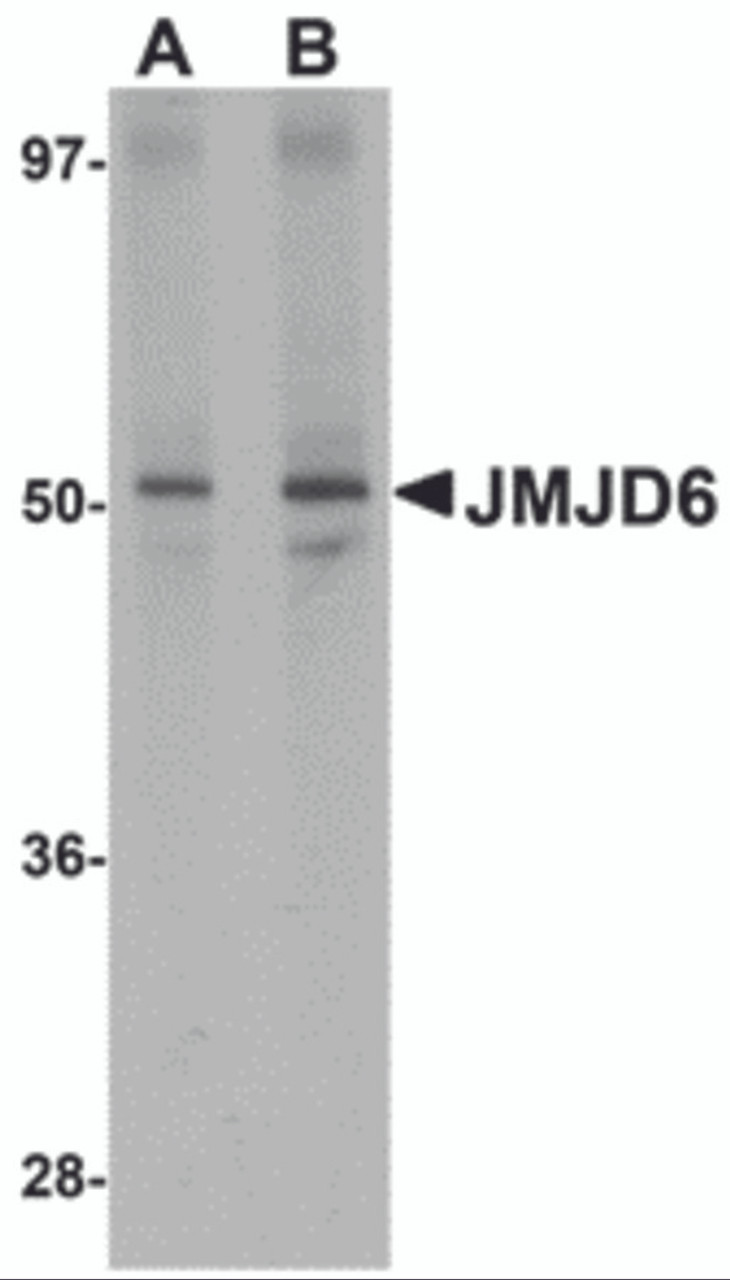Product Description
JMJD6 Antibody | 5383 | ProSci
Host: Rabbit
Reactivity: Human, Mouse, Rat
Homology: Predicted species reactivity based on immunogen sequence: Chicken: (100%) , Bovine: (100%)
Immunogen: JMJD6 antibody was raised against a 15 amino acid synthetic peptide from near the amino terminus of human JMJD6.
The immunogen is located within amino acids 70 - 120 of JMJD6.
Research Area: Homeostasis
Tested Application: E, WB, IHC-P, IF
Application: JMJD6 antibody can be used for detection of JMJD6 by Western blot at 1 - 2 μg/mL. Antibody can also be used for immunohistochemistry starting at 2.5 μg/mL. For immunofluorescence start at 20 μg/mL.
Antibody validated: Western Blot in human samples; Immunohistochemistry in rat samples and Immunofluorescence in rat samples. All other applications and species not yet tested.
Specificiy: N/A
Positive Control 1: Cat. No. 1303 - Human Brain Tissue Lysate
Positive Control 2: N/A
Positive Control 3: N/A
Positive Control 4: N/A
Positive Control 5: N/A
Positive Control 6: N/A
Molecular Weight: N/A
Validation: N/A
Isoform: N/A
Purification: JMJD6 Antibody is affinity chromatography purified via peptide column.
Clonality: Polyclonal
Clone: N/A
Isotype: IgG
Conjugate: Unconjugated
Physical State: Liquid
Buffer: JMJD6 Antibody is supplied in PBS containing 0.02% sodium azide.
Concentration: 1 mg/mL
Storage Condition: JMJD6 antibody can be stored at 4˚C for three months and -20˚C, stable for up to one year. As with all antibodies care should be taken to avoid repeated freeze thaw cycles. Antibodies should not be exposed to prolonged high temperatures.
Alternate Name: JMJD6 Antibody: PSR, PTDSR, PTDSR1, KIAA0585, Bifunctional arginine demethylase and lysyl-hydroxylase JMJD6, Histone arginine demethylase JMJD6, Protein PTDSR
User Note: Optimal dilutions for each application to be determined by the researcher.
BACKGROUND: JMJD6 Antibody: The jumonji domain-containing protein (JMJD) family is defined by the presence of the JmjC domain that is observed in several diverse species. JMJD6 was initially identified as a membrane protein that participates in phagocytosis but recent studies have shown that it has other functions when it is expressed in the cytosol and nucleus. JMJD6 is thought to play important roles in regulation of development and differentiation as knockdown experiments in mice resulted in neonatal lethality with severe defects in the morphology of numerous organs. JMJD6 also can catalyze the lysyl-hydroxylation of U2AF65, a protein involved with RNA splicing, suggesting that some of the functions attributed to JMJD6 may be due to its regulatory activity of RNA splicing.
 Euro
Euro
 USD
USD
 British Pound
British Pound
 NULL
NULL












